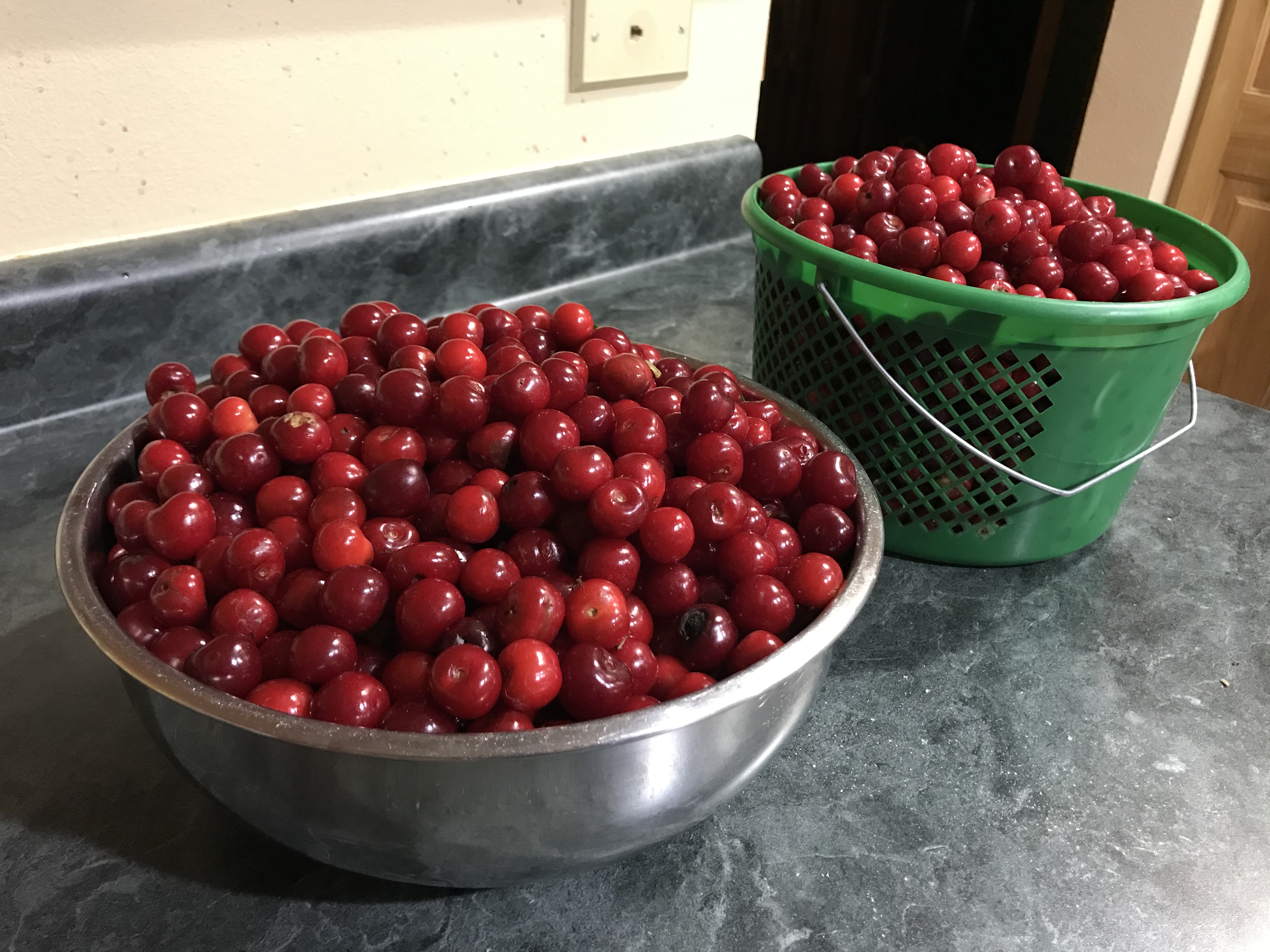My favorite flavor in the whole world, more favorite than chocolate, or smoked porkchops, or pecans, is cherries. Those big dark Michigan cherries; those spotted Washington cherries, and yes, the sour cherries that grow here. I love to eat the sweet ones by the handful, reveling first in the beautiful shape of them, round and firm and soft; and then in the flash of flavor you get when you bite into them—distinctly, purely, cherry.
But of these, the best has to be the cherries I pick from my trees, pitted, stemmed, and sugared into pie filling, or sauce for ice cream, or just to eat with a spoon. They’re not big and round and juicy like the Michigan cherries, but the pure cherry flavor has even Michigan beat.
I planted those two cherry trees probably 15 years ago. They started bearing about the time I moved to Washington, D.C. for work, and each year since then, as we came back for the Fourth of July, we found them done, eaten by the birds. But now they’re mine! Sometimes we have a bumper crop. Other years almost nothing.!
The trees I planted 15 years ago are a dwarf variety and are not native to Iowa. They stand perhaps 20 feet high, instead of the standard 50 feet of the non-dwarf varieties. They bear tart cherries. I wanted sweet ones, but they don’t thrive in our Iowa climate, so tart it is.

Native black cherry with green immature, fruits. Author photo
Black cherry trees (Prunus serotina) are native to Iowa and are said to bear a bitter or sour fruit. They bloom with fragrant white flowers in April or May, bear their crop of cherries by mid-summer, and grace the fall landscape with yellow and rose-colored leaves. I’ve been looking at recipes, and see that almonds are often paired with cherries, to excellent effect. Perhaps the reason they go so well together is the almond scent released when you crush a cherry tree’s leaves. But don’t get too excited—that almond scent is due to the release of hydrocyanic acid contained in the leaves. As the leaves wilt, they produce cyanide, which can be deadly to domestic animals. Deer seem to get by with eating the fresh leaves, but not goats or sheep.
Did you ever wonder why, of all flavors, cough medicine tends to be flavored with cherry? The answer could be that native Americans and early Appalachian settlers made cough medicine from the inner bark of the cherry tree. Infusions of cherry bark were also used for colds, fevers, diarrhea, labor pains, and as a general pain reliever due to its tranquilizing and sedative qualities. Like the leaves, the bark, too, contains trace amounts of cyanide, but in very small short term doses it’s not harmful. Cherries are also said to be good to combat arthritis and gout. Modernday herbalists recommend the cherry for many things, including antioxidants, anti-inflammatories, vitamins, fiber and potassium.
The wood of the cherry tree is beautiful, straight-grained and reddish-brown in color. It’s excellent for woodworking and finishes exceptionally well.
But it’s not just the multiple benefits of the beautiful blooms, the fruit, the leaves, the bark, or the wood—it’s the pits! Imagine yourself winning the national cherry pit spitting contest. You eat your cherry, curl your tongue, take a deep breath, throw back your shoulders, and Petui! Off it goes! The record according to the Guinness folks is 93 feet, six and a half inches, set in 2004. The contest started on a Michigan farm in 1974 and continued until 2020 when the farm was sold. You can still compete, though in Emmett, Idaho, which has its own cherry festival.
Photo by author
